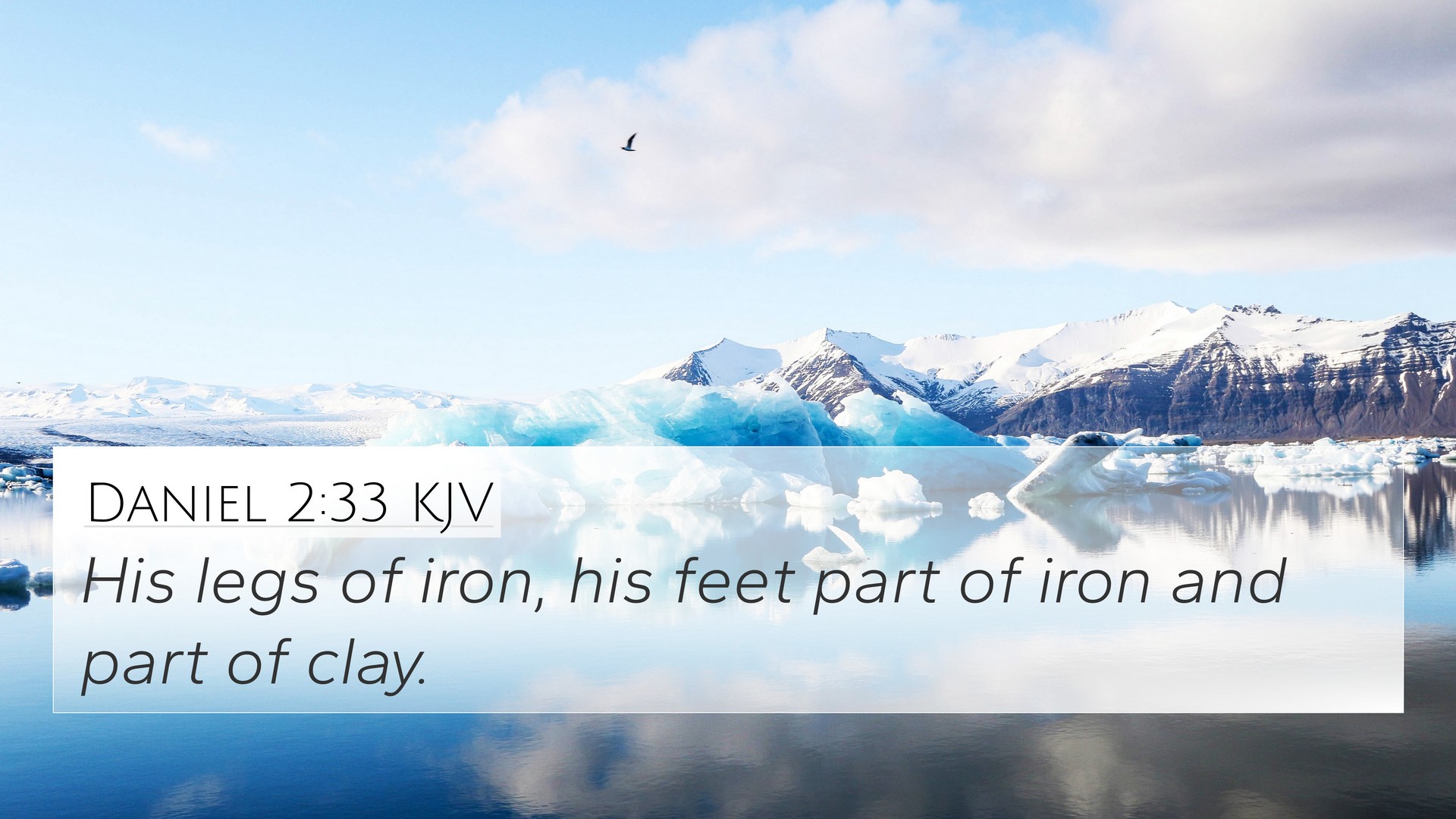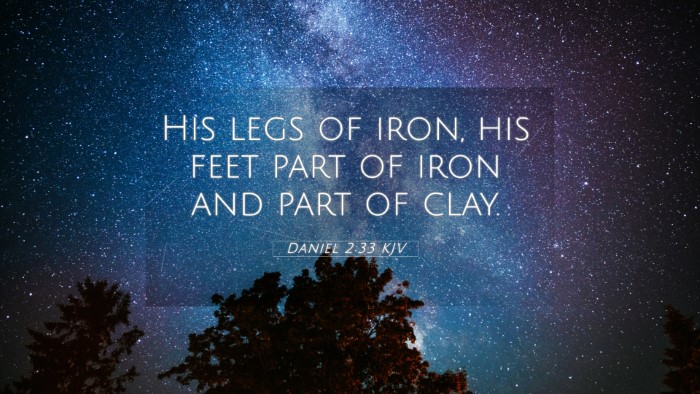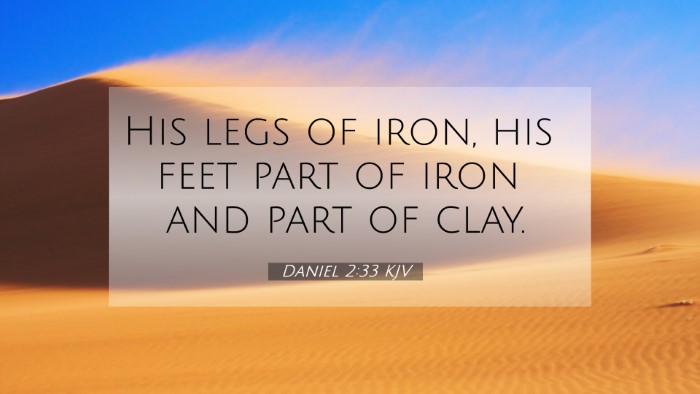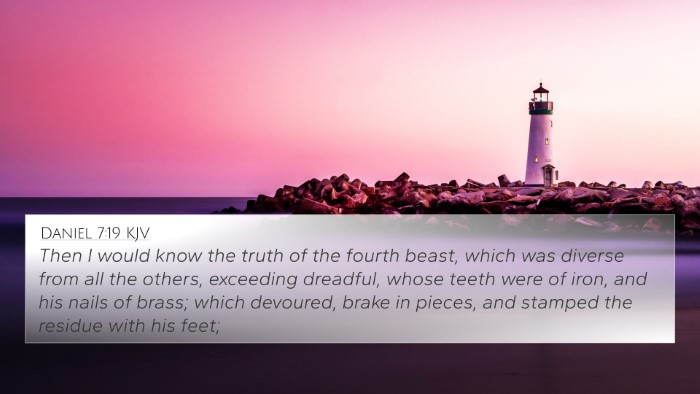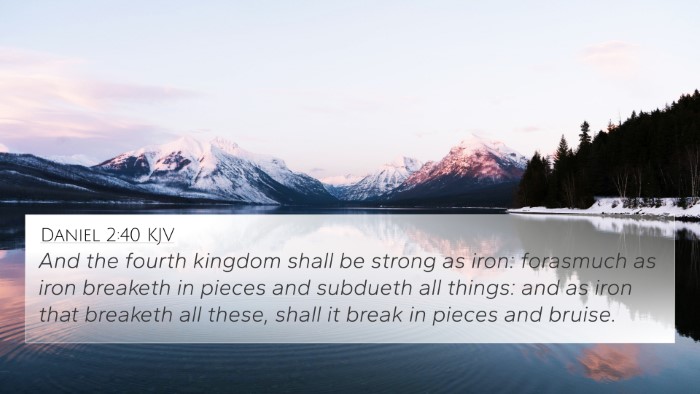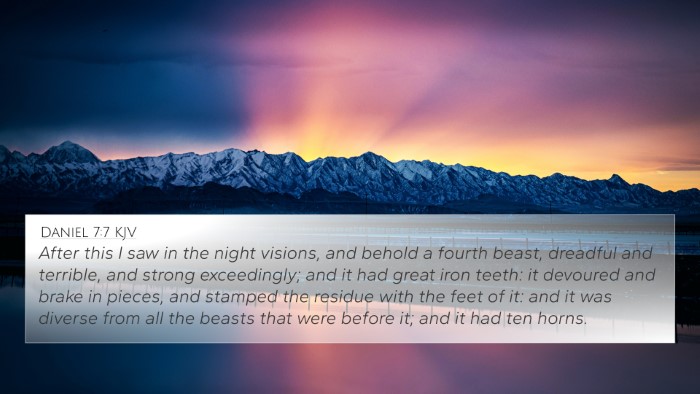Understanding Daniel 2:33
Daniel 2:33: “His legs of iron, his feet part of iron and part of clay.”
This verse is part of a larger narrative in Daniel 2, where King Nebuchadnezzar has a troubling dream that Daniel interprets. The key elements of this dream represent different kingdoms and their qualities.
Literal Meaning
The imagery in this verse pertains to a statue made up of various metals and materials, symbolizing the successive empires that would arise. The legs of iron represent a powerful kingdom characterized by strength and destruction, while the feet, made partly of iron and partly of clay, suggest a kingdom that is divided—both strong and weak, capable and fragile.
Thematic Analysis
- Transition Between Kingdoms: The contrast between iron and clay signifies the transition between powerful empires and the eventual division of authority.
- Human Fragility: The clay illustrates the inherent instability of human power, demonstrating that while some kingdoms may appear strong, they also have vulnerabilities.
Insights from Public Domain Commentaries
Commentators like Matthew Henry emphasize that the combination of iron and clay signifies a lack of cohesiveness in the kingdom, warning that unity will be difficult to achieve. Albert Barnes highlights that the feet, which consist of both iron and clay, symbolize the eventual decay and downfall of empires, celebrating the vision of God’s eternal kingdom that will outlast all earthly powers. Adam Clarke points out the prophetic significance of this imagery, suggesting that the feet represent the final kingdom before the establishment of God’s reign.
Connections Between Bible Verses
Understanding Daniel 2:33 is enriched by its connections with other Bible verses. Here are some relevant cross-references:
- Daniel 2:31-32: The vision of the entire statue, giving context to the nature of the kingdoms.
- Revelation 17:12-13: Discussing ten kings who will receive authority for a short time, echoing the idea of divided power.
- Isaiah 45:1-3: The rise of Cyrus as a tool of God's purpose, showing that earthly power is subject to divine authority.
- Matthew 21:44: Describing the stone that will crush the kingdoms of man, contrasting human imperfection with divine might.
- Psalms 2:1-4: A reflection on the futility of earthly rulers against God's sovereignty.
- 1 Corinthians 3:12-15: Evaluating the materials one builds with, revealing the transient nature of earthly things versus eternal foundations.
- Hebrews 12:26-27: The shaking of earthly kingdoms and the establishment of God's unshakeable kingdom.
Inter-Biblical Dialogue
The themes presented in Daniel 2:33 provoke us to consider the grand narrative of Scripture, illustrating the interaction between human history and divine prophecy. The symbolism used here connects with New Testament texts that reflect on the ultimate authority of Christ's kingdom over all temporal powers.
Through Bible cross-referencing, individuals studying this verse can delve deeper into its characterization of strength and vulnerability. By utilizing tools like a Bible concordance or a Bible cross-reference guide, readers can identify how this verse connects with broader biblical themes, enhancing their understanding of scriptural messages about governance, power, and divine sovereignty.
Practical Applications
For those seeking to apply the lessons of Daniel 2:33 in their lives:
- Understand Human Limitations: Reflect on the fragility of human power and the importance of building one's life on eternal truths.
- Seek Divine Guidance: Trust in God's ultimate authority and governance over all human affairs.
- Engage in Comparative Bible Study: Use the provided cross-references to contextualize teachings in Daniel with those in other books of the Bible.
Conclusion
Ultimately, Daniel 2:33 serves as both a warning and a comfort. It reminds us of the transient nature of earthly kingdoms and the eternal stability found in God's kingdom. By exploring cross-references and connecting themes throughout Scripture, believers can glean insights that inspire faith and guide their understanding of God's sovereign rule in an ever-changing world.
